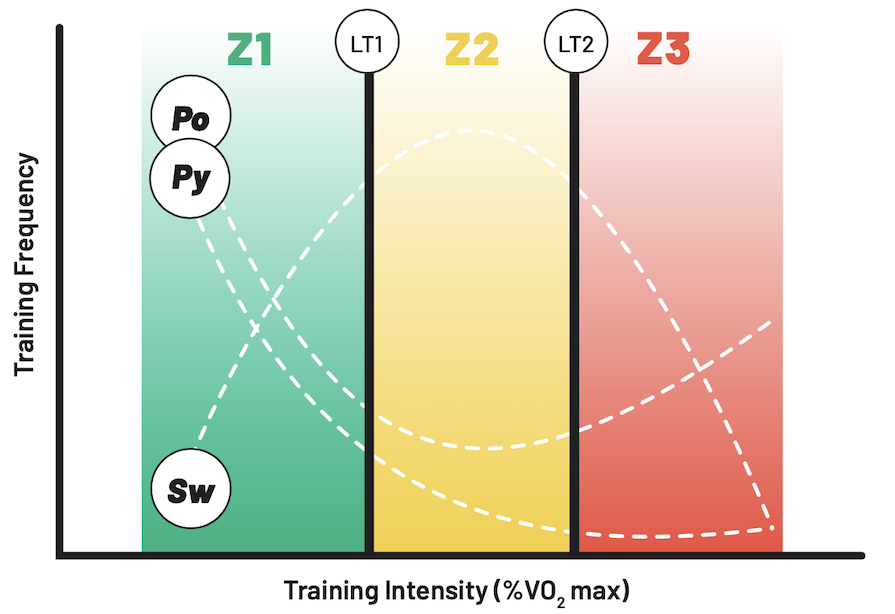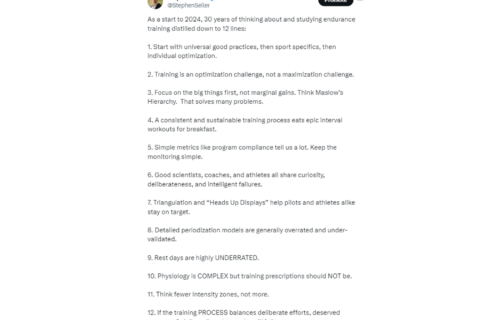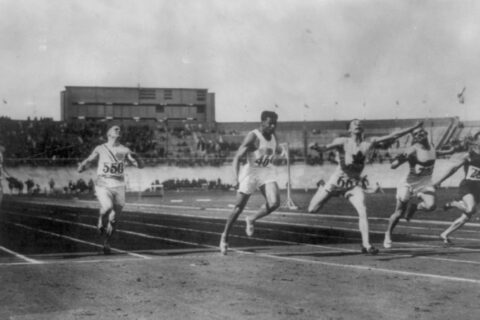Let’s take a closer look at polarized, pyramidal, and sweet spot training to better understand the characteristics of each approach. While you might not consider yourself loyal to any of these three camps, your training might tell a different story.
Polarized Training
Dr. Stephen Seiler’s polarized model uses zones that are defined by two lactate threshold (LT) markers, the aerobic threshold (LT1) and the anaerobic threshold (LT2). Most of us are familiar with the anaerobic threshold. This is what we consider “threshold training,” but there is far less talk about aerobic threshold. The aerobic threshold occurs at a relatively easy intensity. Combined, these two thresholds designate three physiological zones. Polarized training aims to distribute training primarily between zone 1/low intensity and zone 3/high intensity.
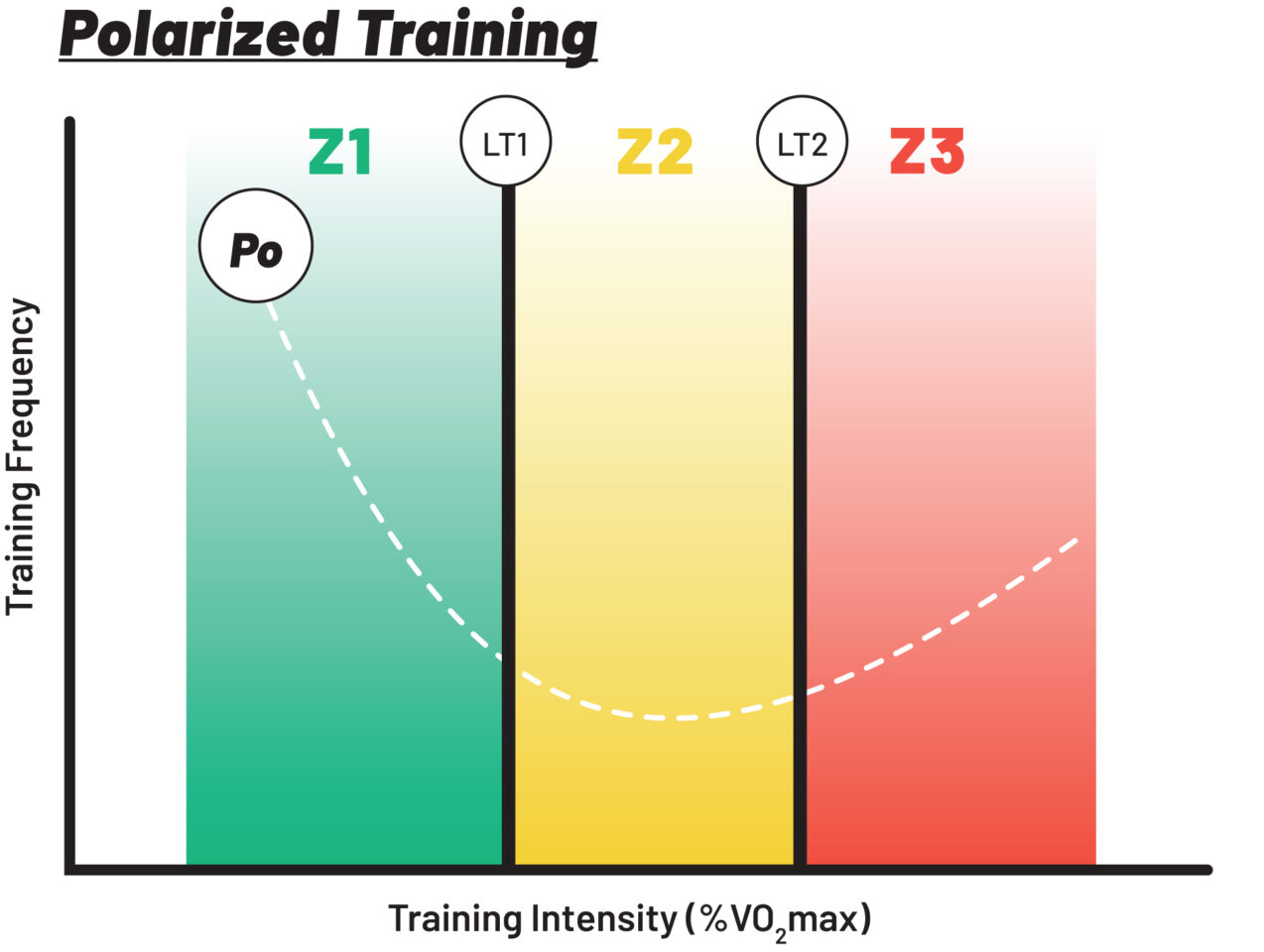
The aerobic threshold is the point where lactate begins to accumulate in the blood, around 70–75% of maximum heart rate. When you are working below this threshold, the effort feels very manageable—you could continue the effort over a longer duration and even have a conversation while you do it. Of course, after an hour or two this zone 1 effort will begin to feel more challenging. Longer zone 1 workouts are key to unlocking the benefits of polarized training, but there is also an emphasis on recovery and low-intensity workouts that tell the body to adapt without incurring the stress that comes from crossing that threshold into zone 2.
The anaerobic threshold is around 85–90% of an athlete’s maximum heart rate. We often talk about “threshold workouts” in terms of functional threshold power (FTP), or the highest power that an athlete can sustain for about an hour. Once your effort exceeds LT2, there is a significant amount of stress, so these workouts need to be carefully timed and allow for plenty of recovery in order to adapt to the high-intensity work.
It’s because of the risks associated with this stress that polarized training carries a prescription that 80 percent of training be low intensity. The remaining 20 percent is split between zone 2/moderate intensity and zone 3/high intensity, with significantly more time spent in zone 3.
Training volume is typically higher with a polarized approach. Cyclists and triathletes will put in 2–4+ hour rides at low intensities. Runners often achieve the same objective but avoid the stress of high mileage by splitting the volume of zone 1 work into two sessions in a single day.
Studies have shown that recreational runners who are training only 4–5 hours per week can see greater gains with a polarized approach to training. In other words, it’s the mix of intensities that seems to create the results.
Sweet Spot Training
In the context of the same 3-zone model that Dr. Seiler uses for polarized training, sweet spot training puts the focus on zone 2 work, specifically targeting 84–97 percent of the athlete’s FTP. Scientists refer to this type of training as “threshold training” because it occurs between the aerobic and anaerobic thresholds. Because athletes think of threshold training as an intensity right at the anaerobic threshold, there can be confusion around the terminology. The terminology “sweet spot training” has been used to clear up that confusion.
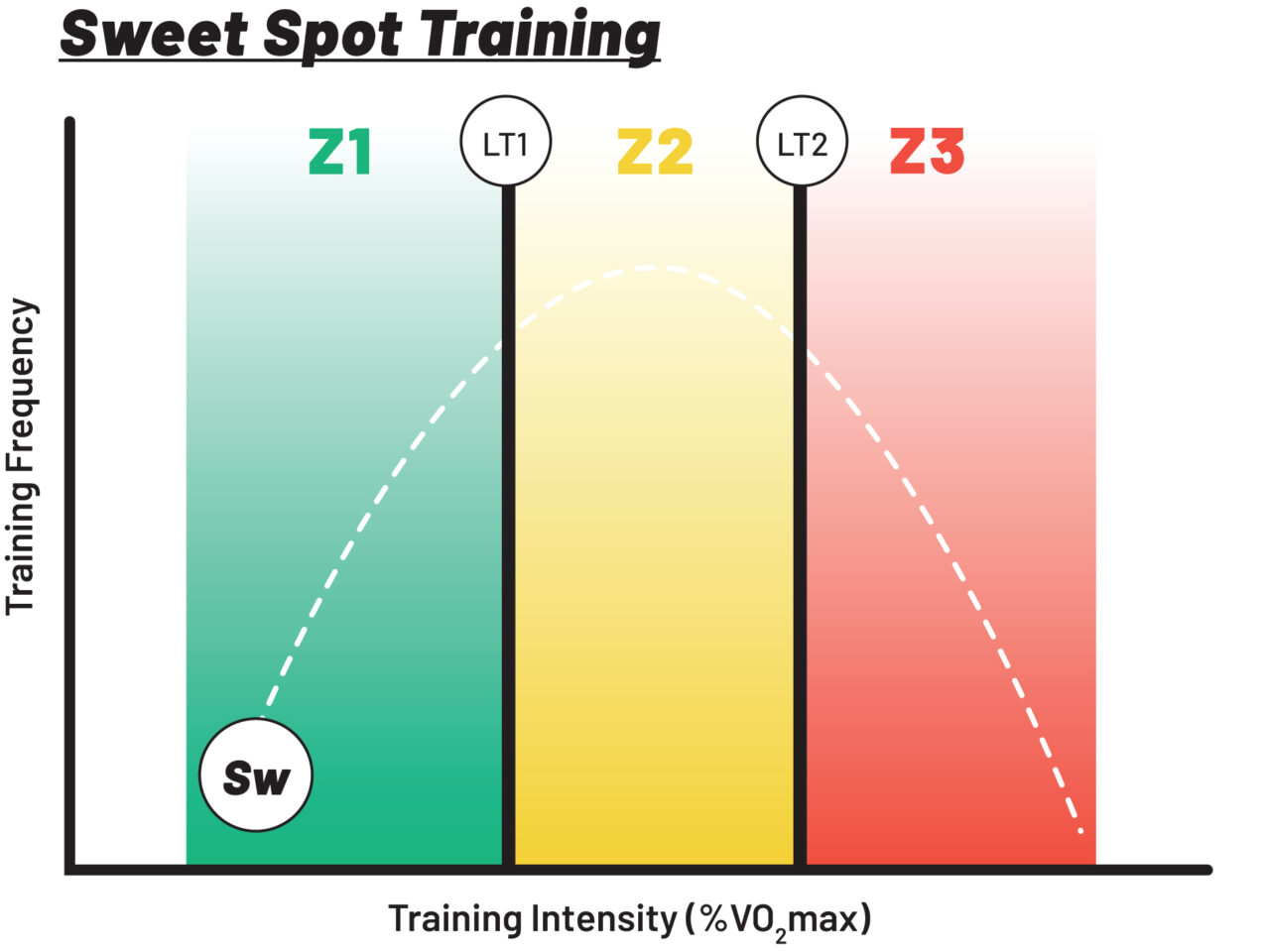
The rationale behind this approach also helps explain the name. When we train, we are trying to enhance the body’s different energy systems. Proponents of sweet spot training believe that you can target the most energy systems in zone 2 without the high stress and damage of zone 3 training. Hence, zone 2 is the “sweet spot” where gains are maximized.
This training model is closely tied to power output, which is why it typically makes use of 7+ zones. So within sweet spot training, an athlete will do a variety of recovery (zone 1), base training (zone 2), and tempo intervals (zone 3), but it’s the high zone 3/low zone 4 work where the athlete consistently tries to build stamina and extend the effort. High-intensity efforts, such as VO2max, are used more selectively to target race-specific preparation once the athlete has a base of fitness.
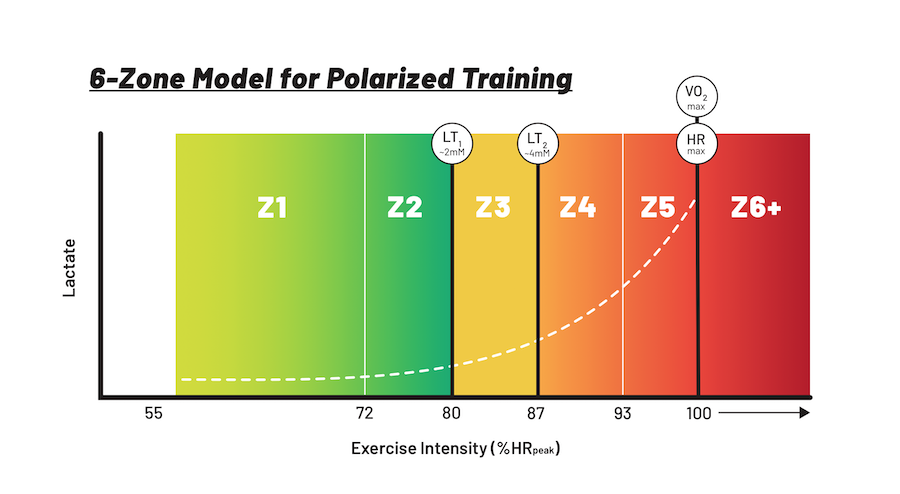
Because the bulk of the athlete’s training is done at a higher intensity, the total training volume of a sweet spot program is likely to be lower than a polarized program. It’s not uncommon to witness time-crunched athletes preferring this approach; their busy schedules prevent them from logging long hours training at lower intensities, so they prefer to get more “bang for their buck” from sweet spot training. This can, of course, lead to a greater risk of overreaching, especially if shortcuts are taken when it comes to sleep, recovery, and adequate nutrition.
Pyramidal Training
Like polarized training, pyramidal training places an emphasis on low-intensity/zone 1 work, with as much as 80 percent of an athlete’s training below the aerobic threshold. As the name infers, the distribution of training is more pyramidal in shape, with each intensity level “stepping down” in its contribution, i.e., most training is easy, a good portion is moderate, and a small amount is high intensity.
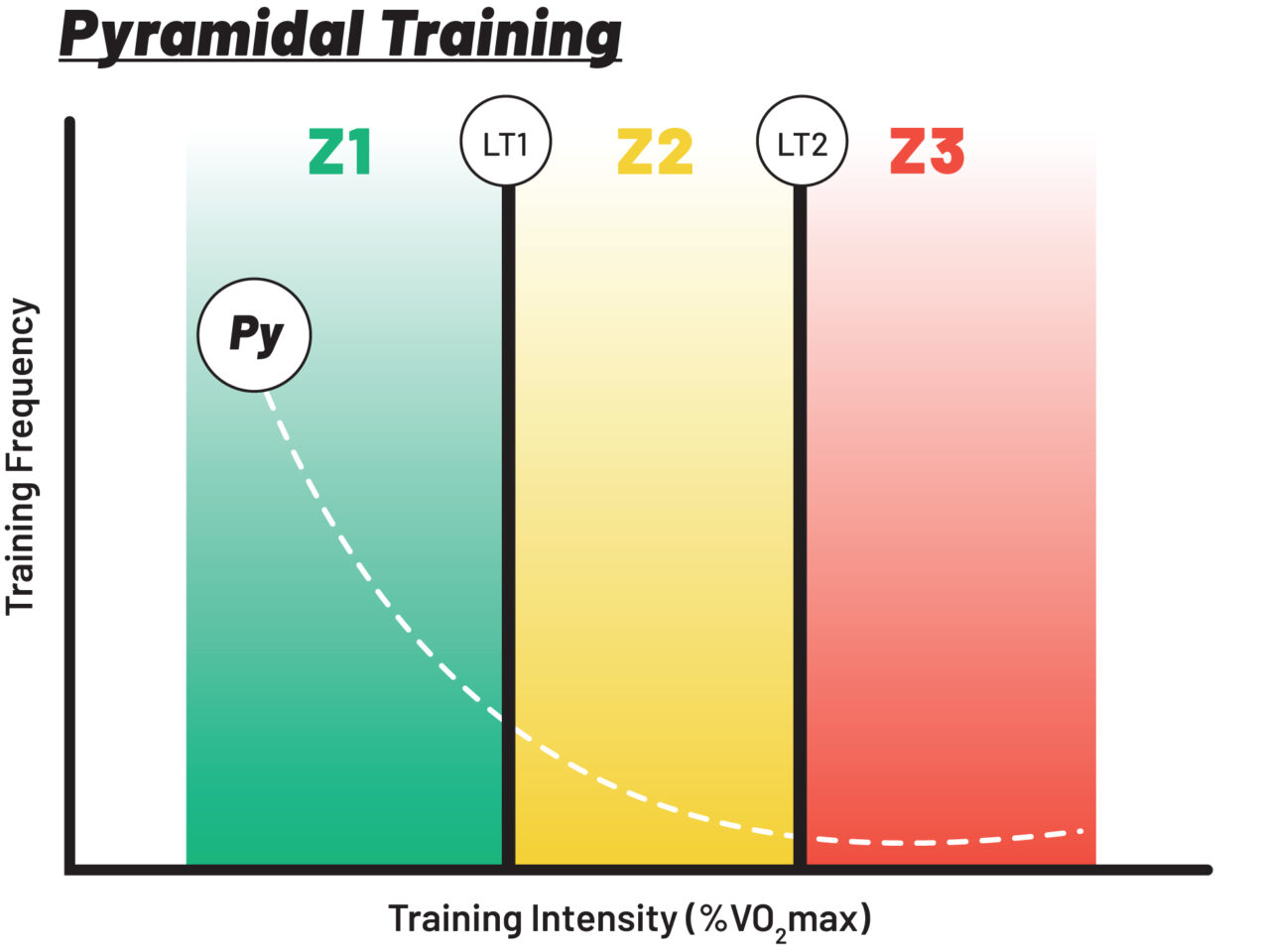
It’s this work done in the moderate zone that really differentiates pyramidal training from polarized. The moderate-intensity training should be done between the aerobic (LT1) and anaerobic (LT2) thresholds—and it’s important that effort/intensity doesn’t “creep up” beyond that LT2 marker. Frequent lactate monitoring is important to ensure the athlete isn’t working harder than necessary.
There are times when the difference between polarized and pyramidal training can come down to semantics. For example, consider an athlete who does mostly low intensity through the week, with two Tabata sessions (sets of 20 seconds all-out with 10-second rests. Looking at the intention of the workouts, the athlete was either going easy or all out for short durations, which is highly polarized. However, if you look at the distribution of the week by heart rate, it will appear pyramidal since heart rate tends to remain in zone 2 during Tabata workouts. The alternating rest intervals prevent heart rate from reaching zone 3.
Takeaways for your own training
It’s easy to see that polarized training presents a stark contrast to sweet spot or, as it’s called by physiologists, threshold training. With a polarized approach you will spend very little time in zone 2. The difference between polarized and pyramidal training, on the other hand, is much more subtle. Both approaches suggest that the majority of training occur at low intensity, but they differ in the recommended intensity distribution of the remaining 20–25 percent of training. Further complicating things, that breakdown between zones 2 and 3 can be easily skewed depending on how intensity is tracked—whether by session goals, heart rate, power, or pace (time in zone)—as demonstrated by those Tabata sessions above.
Recent research has attempted to illuminate the differences between polarized and pyramidal and even suggests that there is little to no difference at all. For more on this debate and a deep dive into the most recent research on the topic, check out episode 210 of Fast Talk, Nerd Lab: Eccentric Damage and a Heated Polarized Debate. (Hosts Rob Pickels and Coach Trevor Connor take up the polarized debate about 20 minutes into the episode.)
It remains the case that any training approach that you adopt will need to be tailored to your unique physiology. It’s a matter of understanding the rationale, choosing an approach, and embarking on your own “study of one.”
